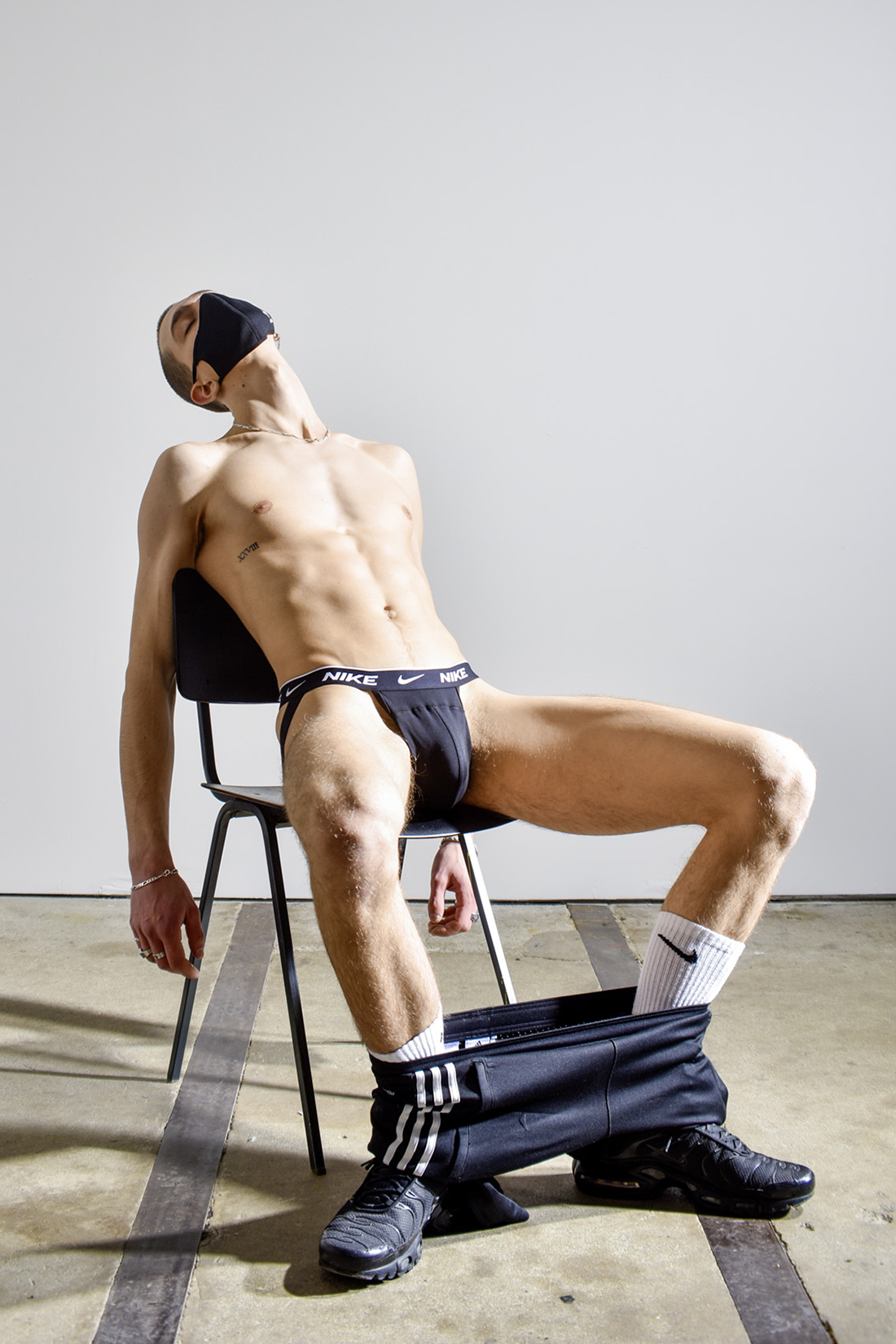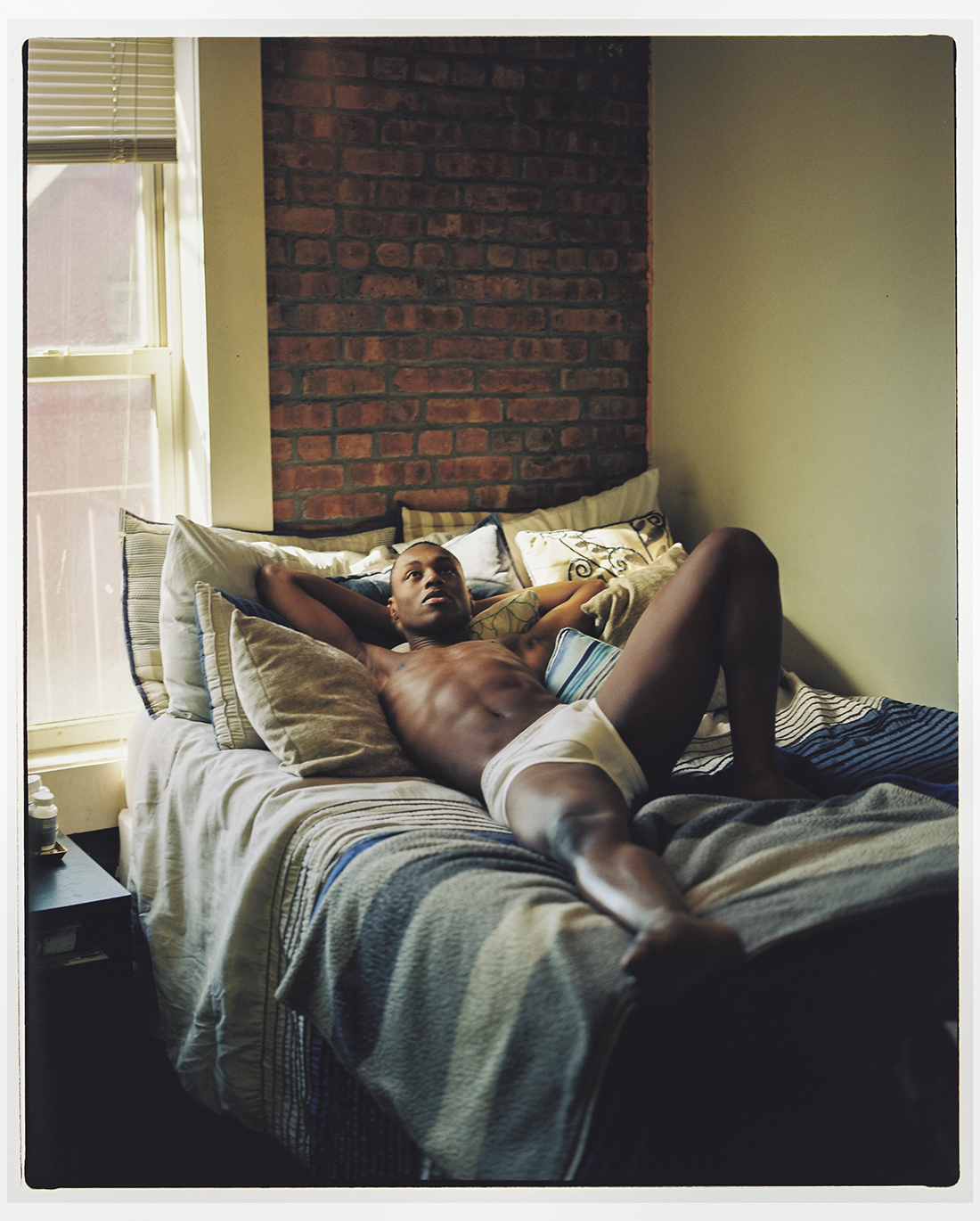Obsessive, fetishistic and unapologetically queer! COME CLEAN – The first monograph of Belgian artist Yves de Brabander, explores identity, masculinity, spirituality and sexuality. Published by Paper Affairs.


Yves de Brabander, a visual artist and photographer hailing from Antwerp, Belgium, is renowned for his evocative fashion photography and fine art. Beyond surface aesthetics, he employs the male body as a canvas to convey richer narratives intertwined with themes of religion, notably Christianity, and his personal experiences growing up as an adolescent in the 90s—an era marked by advocating for gay rights amidst AIDS pandemic protests.
The themes of censorship within his work not only echoes his youth but also resonates with the new challenges of censorship in today’s society and on social media.
His creations, displayed in esteemed galleries such as Munch Gallery and Instinct, artfairs including Art Basel Miami and Tom of Finland Art&Culture Festivals have captivated audiences worldwide. Meanwhile, his photography has been featured prominently in esteemed publications like Art+Religion in the 21st Century and VISIONS – Contemporary Male Photography.

“Come Clean” [to admit, to tell the truth about something] began as a minimalist celebration of uniqueness, embracing the perceived “perverted,” and finding joy in the feeling of being the odd one out has evolved into a transformative narrative fostering unity within diverse communities. The series challenges preconceptions, encouraging a deeper understanding of individuals navigating non-conformist desires.


Could we start with some background information about you? Where you grow up,
where you based, how did you get interested in photography?
I was born and raised in a (then) cute little town filled with Art-Deco buildings at the Belgian seaside, just a short bike-ride from Bruges to the South and the Dutch border to the East. My mother died before I turned 18, my father was an architect and did his best to fuel and pushmy creative skills, I remember myself passionately drawing and painting when I was just a kid… He gave me my first Nikon camera when I was 15. I carefully documented everything around me, my friends, trips and summer camps with boy scouts… sure that’s the reason why I went to study photography in Antwerp. My father also died of a chronic disease when I was just 23 that’s when I decided to move to Antwerp and leave my hometown. Belgium in the mid 90s was still a wild ride, especially with all the homophobia and practically zero gay rights. But I found my groove as part of different LGB movements, hitting the streets of Antwerp and Brussels making noise about our existence. During that time, Istarted working as a freelance photographer for local LGB organizations and party concepts. That’s how I ended up being the permanent photographer for SENSOA shooting HIV and STD campaigns until they stopped the program in 2009.

There is always time and learning for someone to find their own style. That you remember back, was something of a turning point from your photos are started to be “Yves de Brabander”?
During my years shooting campaigns for SENSOA, I simultaneously started photographing my first projects, exploring the theme of male nudity further (which I already started to explore in photography school). Because of the Queer culture I moved around in and the sexual tone of the campaigns I shot, I could explore this further and make it my own. I think my style started to develop then into what I would call now minimal images of sensuality, desire and introspection. Also the religious themes and undertones have always been part of my work since the early 2000s

How did you and the publisher find each other? As far as I know, they did not live in the same city. What were the difficulties of distance? Can you tell us about your work on how the book came about?
I started talking online to Peter from Paper Affairs Publishers during Covid. I just started the first shoots of this COME CLEAN project and tried to sell some prints online, Peter was one of the first to order one of those. I was still more focusing on my other work of doubled and layered images from my other projects and we were talking about how those pieces could be translated into a book. When the Come Clean project started to become more and more popular on social media, I organized more shoots and short after Peter contacted me expressing his interest in doing this book together.
I had already prepared a 280 pages pdf proposal and we took it from there. He immediately liked the theme and concept of the 3 chapters buildup and gave me suggestions and edited the selection of works in the book. I think the pdf went back and forth maybe 5-6 times only before we both agreed on the final layout, paper, cover etc all remotely via WhatsApp and a few video calls.
The moment we went into print, I flew to Vienna to check on the final paper, mockup and color proofings and went to the printer together to watch the first pages roll from the press. Very emotional moments!

What is the end result, what do we see in your book?
I think the title says it all “Come Clean” means to admit something. To tell the truth about something. I guess you can say it’s an artistic journey of sexuality, gay culture, human existence.
Freely using some passages from the bible, the result is interwoven with themes of Christianity and personal experiences, embracing the perceived “perverted”, celebrating the diversity of lust, desire and sexual interests. Exploring the “unconventional” desires, what we still call kinks, perversions or fetishes today making them hidden, taboo or non-conform. The single chair is a symbol of solitude, a partner of physical absence, the individual seems the odd one out. In the second chapter of the book, we have the deliberate act of “getting dirty” on my hand-colored charcoal background, a symbol for embracing sexual identify, leaving stains on the body, making the models “dirty” inviting viewers to reflect on the complexities of arousal and lust in various contexts, questioning preconceptions and encouraging a deeper understanding of the individual and sexual identity.


Yves de Brabander explores themes of identity, masculinity, spirituality, and sexuality. His works reference religious imagery, arthouse cinema and film noir and challenge censorship and societal stigma by celebrating desire in all its forms. His first monograph, COME CLEAN, invites us to shed our inhibitions, embrace our hidden desires, and revel in the beauty of our shared humanity. His art celebrates human form and spirit and urges us to reconsider our perceptions of sexuality, gender, and identity.
-Introduction and preface by Slava Mogutin






COME CLEAN – 152 PAGES – 158 IMAGES – 23,5 x 33 cm
100% woodfree and non-aging, acidefree FSC certified and climate-neutral paper. CO2 neutral offset printed in Austria.
Photographs by Yves De Brabander @yvesdebrabander / www.yvesdebrabander.be / yvesdebrabander.bigcartel.com / twitter.com/YvesdeBrabander
Published by: Paper Affairs www.paperaffairs.com / @paper_affairs

Be the first to see and hear about discounts, extras and updates! Sign up for Pineapple’s newletter here:




